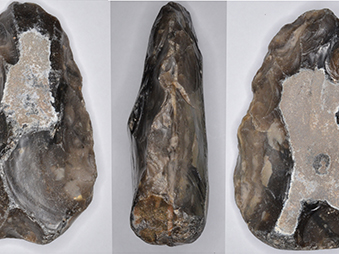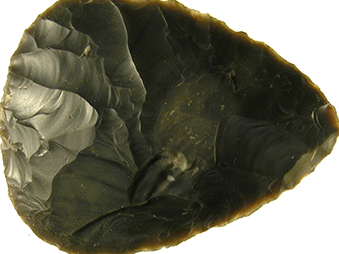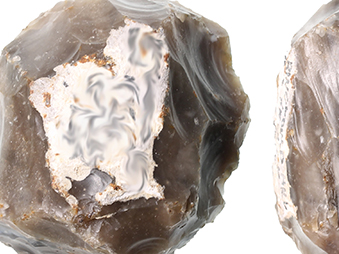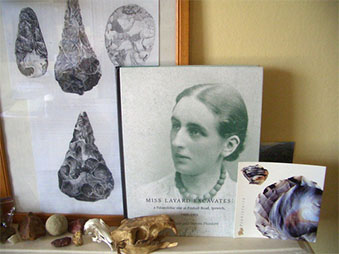Suffolk is one of the most important counties in England for Early Prehistoric (Palaeolithic and Mesolithic) archaeological remains. This is not just in terms of numbers of finds or sites - there are 1676 separate Historic Environment records - but also because it is home to some of the most important sites in Europe, such as Pakefield (HER record GSE 061) and Beeches Pit (WSW 009). Suffolk also has significant post-glacial Long Blade sites, such as Devils Wood Pit (SPT 001), and has a wealth of Mesolithic material.
The Suffolk Historic Environment Record (SHER) uses the dating format BC (BCE) AD (CE). However, it is also common in Early Prehistoric archaeology to use years ago BP (before present); (“present” in this context is 1950). In the SHER records, date ranges have been approximately converted from BP to BC, where appropriate. Marine Isotope Stages (MIS) are used as the chronological framework to describe glacial cycles as well as years ago BP.
Explore this section further to find out more about important aspects of East Anglian Early Prehistory, including periods, tool types, important sites, and important figures in the history of investigation.
Watch an introduction to Palaeolithic and Mesolithic Suffolk
with Dr Hannah Cutler (Suffolk County Council Archaeological Service)





